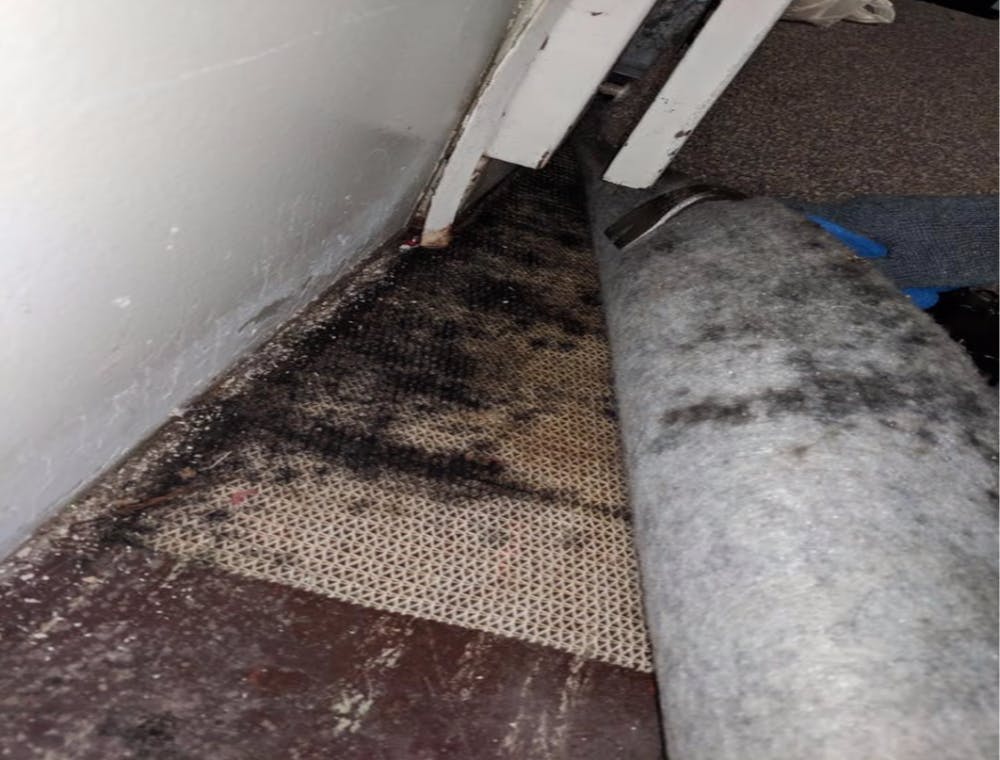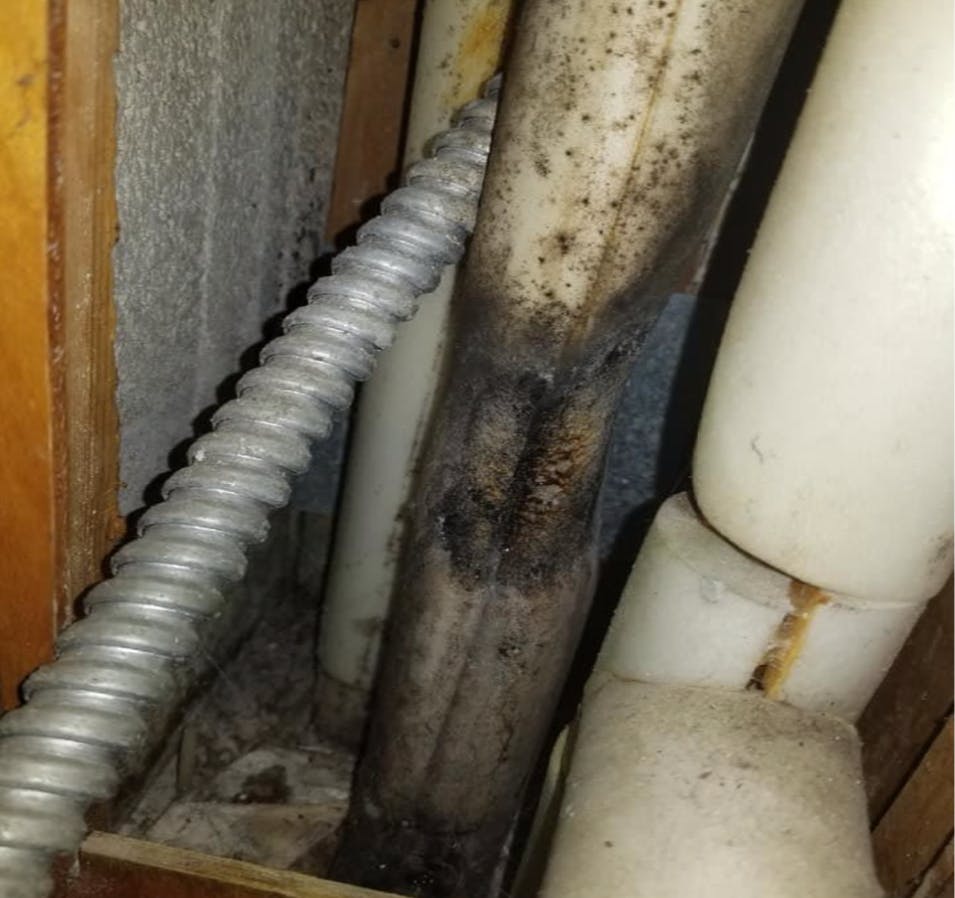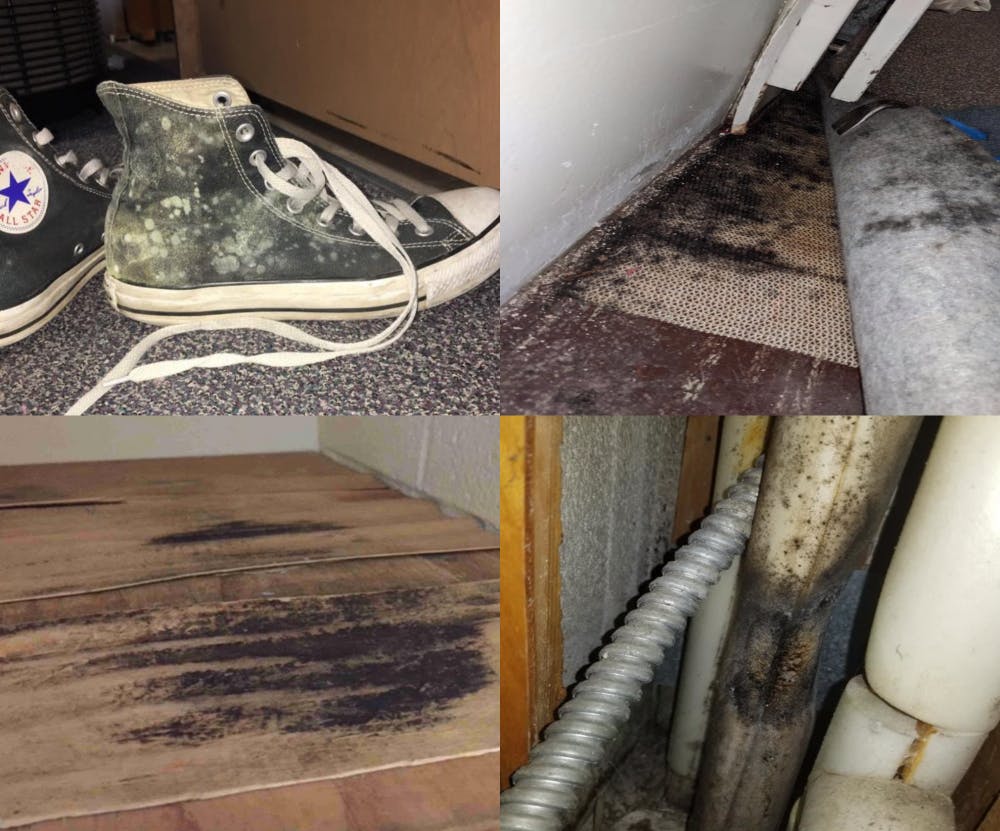IU is not contractually obligated to provide clean, safe or mold-free housing to its students, attorneys representing the university’s Board of Trustees have argued in a court filing.
More than 20 IU students who lived on the Bloomington campus at the time are suing trustees of IU after dealing with mold this year in residence halls.
The students’ attorneys claim IU broke its contract by allowing students to move into mold-plagued rooms. They also allege a number of wrongdoings, including negligence, fraud and deception.
But IU’s attorneys filed a motion to dismiss the suit, arguing the students have no case.
“The written contractual terms and conditions do not state that Indiana University is contractually obligated to provide dormitories that are either free from mold, ‘suitable and ready for inhabitation,’ or ‘clean, safe, and habitable,’” IU’s attorneys wrote in a court filing.
Indiana law outlines landlord responsibilities such as maintaining premises that are in “safe, clean, and habitable condition.” However, educational institutions are exempt from these statutes.
Whether the university still has an implied expectation to keep its residence halls clean could be argued in court.
When students discovered mold in Foster and McNutt quads last semester, those living in the residence halls received compensation totaling more than $7.3 million.
IU’s attorneys also cite an Indiana law that caps the amount a state entity can be made to pay for wrongdoing at $5 million. The $7.3 million, IU’s attorneys argue, is already more than the university could be held liable for under the law.
Thousands of students have dealt with the fallout of mold on campus.
They all started the same. They visited IU and fell in love with its limestone buildings and Herman B Wells lore. As August approached, they packed up their bedrooms and said goodbye to hometown friends. And then they showed up, leaving childhood behind. This was what they were waiting for.
But then the asthmatic had to change her medication. The Kelley School of Business student had to move out of her living-learning center. The first generation college student had to replace her clothes — she could’ve gotten reimbursed, but the process just seemed like another hassle.
The university offered a variety of remedies when students discovered mold in McNutt and Foster quads — and eventually Teter. The university set up a buildings website to update students on the issue and has offered laundry credit and electronic cleanings, among other support.
It announced in December that Foster and McNutt will be renovated next school year. IU will operate beds in the Reserve on Third, Park on Morton and Smallwood on College apartment complexes to make up for the loss.
Still, students sued. Their attorneys argue the university failed to properly clean its dorm rooms. They also allege the university’s remediation process was flawed when students alerted IU staff about mold.
On top of all this, they claim IU has been ignoring its mold problem for years.
The plaintiffs are seeking class action status. If a judge allows it, the lawsuit will represent everyone who lived on the Bloomington campus in the 2018-2019 school year. A judge recently set an Oct. 10 hearing on class certification.
A judge has decided to treat the motion to dismiss as a summary judgment, which means she will determine if the students or IU should win some, all or none of the claims. She will also determine if the claims should be submitted to a jury.
The judge has also ordered IU to file a point-by-point response to the students’ complaints by mid-May.
The students allege air samples used to determine a MoldSCORE, a test developed by an outside company which the university uses to help assess a room’s state of mold growth, were biased.
The results, they say, are meaningless.
The maximum MoldSCORE is 300. Students in rooms with high scores – more than 250 – were relocated, according to the buildings website. Students in rooms with moderate scores – between 150 and 250 – were given the option.
Students in rooms with low scores – less than 150 – didn’t move.
More than 3,000 air purifying machines were installed in residence halls, according to the buildings website.
Because air samples were taken directly from air filtered through the devices, the attorneys allege MoldSCOREs don’t indicate whether mold was effectively removed.
“It might even be possible to get a ‘green’ MoldSCORE report by testing air coming from the HEPA machine where black mold coated surfaces like a rug,” the complaint alleges.
IU says there is a reason for testing air after devices have been installed on its buildings website.
“Since a HEPA air filtration device will continue to be present and in operation after the room is reoccupied, then that is the circumstance that should be tested,” an IU buildings FAQ page says.
The complaint includes multiple photos of rooms the students’ attorneys say were deemed safe but appear to still have mold.

The students’ attorneys also argue IU “conducted a campaign designed to mislead and confuse its students, their families, and the public.”
Various local media outlets, including the Indiana Daily Student, WTHR, IU NewsNet and Fox 59 News, quote IU officials attributing mold growth to high temperatures and humidity, exacerbated by running air conditioning units with open windows.
Private emails unearthed during the lawsuit process between IU staff contradict that version of events, the attorneys argue.
“In most cases the windows weren’t open and the AC units were on, yet we still grew mold,” a September email from Environmental Manager Dan Derheimer quoted in the lawsuit says. “And every room is different, although in most cases the mold was associated with condensation on chilled water lines in unconditioned, somewhat poorly accessed utility chases.”

Utility chases, the attorneys say, are boxes in the corner of the rooms and house floor-to-ceiling water pipes that feed the system used to heat and cool the room.
“So the far majority of the rooms chases haven’t been opened up for years to do any form of maintenance activities,” said University Asbestos Program Manager Jerry Bush in a September email quoted in court documents.
The students’ attorneys argue the failure to maintain these utility chases has led the insulation on the pipes to deteriorate, allowing mold to grow.
Further, the students' attorneys argue IU is not completely cleaning the rooms.
“Since there are a number of building issues not addressed, I expect we will see this again in the Spring anyway,” said an October email from an IU staff member included in court documents.
In late October, an IU official told the Herald-Times mold in Teter was only found in closets, not in the heating and cooling systems.
The students’ team also submitted to the court an 8-page document containing images apparently taken inside dorm rooms. Although many parts are redacted, a few images the document says are from Teter show mold growing in places other than closets, including in the utility chases.

The Herald-Times article also says about two dozen reports of mold had been confirmed in Teter, but internal data obtained in the lawsuit and put in a court document said IU had received at least 77 mold reports for rooms in Teter. Only 10 of those 77 rooms apparently did not have visible mold, according to the court document.
Public relations, the students’ attorneys argue, were prioritized over safety and moral obligations.
The students’ attorneys cite 2016 and 2017 IDS articles about mold in which IU officials said rooms would be cleaned. Still, mold was discovered in fall 2018.
The complaint also cites a 2005 112-page report from a university capstone course which concluded IU had a campus-wide mold problem stemming from the inadequate repair of water leaks and damage.
This report features case studies of IU employees who worked in buildings across campus.
One interviewee from the report, who was quoted anonymously, reported mold in his or her office. Air vents were vacuumed, and the interviewee received an air cleaning system, he or she said, but it was not enough.
“The interviewee does not feel that the ultimate response was adequate because s/he, along with many other people in the building, is still experiencing severe allergic reactions to mold,” the report says.
This report, the students’ attorneys argue, is evidence that IU has had mold problems for years and knew about it, but never took action.
IU’s attorneys will file an answer to these allegations by mid-May, addressing them point by point.




